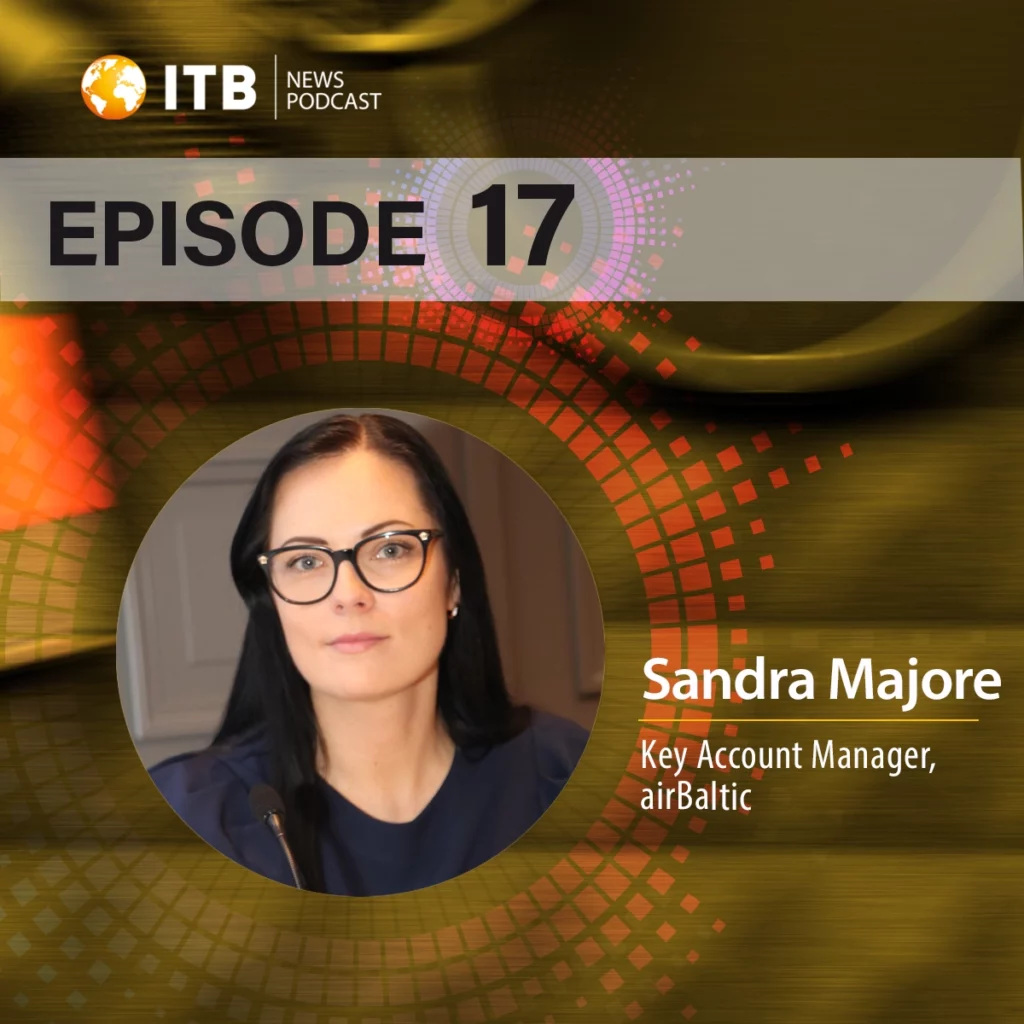From record-breaking route launches to pioneering green aviation initiatives, discover the dynamic trajectory of airBaltic as it fuses tradition with innovation in the aviation sector, in our interview with Sandra Majore, Key Account Manager at airBaltic.
Could you briefly summarize what airBaltic represents today in terms of network basis, number of aircraft, and total passengers in 2022?
Certainly. airBaltic has been consistently growing and recovering from the pandemic, and regional crises have impacted our operations too. Nevertheless, our results have exceeded our expectations. We currently operate over 100 routes from four bases: Riga, Tallinn, Vilnius, and Tampere. We’ve also announced a winter season base in Gran Canaria. Our fleet consists of Airbus A220-300s, with 42 aircraft presently. By August, we expect to add two more aircraft, making us one of the largest operators of this aircraft type globally. In terms of passenger numbers, we had about 3.44 million passengers in 2022 and operated 37,300 flights.
We understand that airBaltic primarily operates in the Baltic states, through Riga, Tallinn, and Vilnius airports, and now also Tampere. Are there plans for other airport bases in the near future?
While we’re always evaluating market opportunities, currently, there are no plans to open a new base apart from the one recently announced in Gran Canaria for the winter season.
How has passenger traffic evolved in 2023? Are the numbers matching your expectations, especially during the summer?
Every month this summer, we’ve seen consistent growth in passenger numbers. We’re not just talking seasonality but also comparing it to previous years. The launch of 20 new routes this year has significantly boosted our traffic. For instance, in July, we carried over half a million passengers, a number similar to what we saw in June. So, the summer has indeed been strong for us.
Are there any new destinations or routes for the coming winter season?
Yes, we’re launching 11 new routes this winter. From Riga, we’re introducing routes to two new destinations. We’ll continue our summer routes to Istanbul and Bucharest into the winter. From Tallinn, we’ll operate three new routes: Tampere, Tenerife, and Geneva. From Vilnius, we’re adding four new destinations: Brussels, Tenerife, Dubai, and Odessa. Additionally, from Tampere, we’re introducing two new routes to Tenerife and Porto. Lastly, from our new Gran Canaria base, we’ll operate direct routes to several Baltic and Northern European cities, including Riga, Bergen, Copenhagen, Aalborg, both Oslo airports, Vilnius, Tampere, and Tallinn.
airBaltic operates on a hybrid airline economic model. How do you differentiate from traditional and low-cost carriers in terms of service?
We indeed consider ourselves a hybrid airline, offering both a full-service business class and a low-cost economy class. Our product range is diverse, catering to different passenger needs. Services include cabin baggage allowances, seat selection, a robust buy-on-board menu, and special policies for groups, children, and sports equipment. We also have interline and codeshare agreements with several global airlines.
Can you elaborate on airBaltic’s policy for travelers with pets?
We warmly welcome our furry friends on board. However, there are guidelines in place. We transport only cats and dogs, either in the passenger cabin or in the aircraft cargo hold, depending on the pet’s size and weight. Other animal species must be transported as manifest cargo. There are strict regulations, including a limited number of pets allowed per flight. More details are available on our website, and our call center can provide clarifications.
You’ve introduced numerous payment options recently. Can you share more about these?
We offer a plethora of payment options for convenience. Apart from traditional payment cards like American Express, Visa, and MasterCard, we also accept digital services like Apple Pay, Google Pay, and PayPal. We were pioneers in accepting Bitcoin and other cryptocurrencies as early as 2012-14. Additionally, passengers can split their booking costs or even pay using airBaltic Club points from our loyalty program.
Sustainability is gaining importance among travelers. What is airBaltic doing to become more sustainable?
Sustainability is central to our operations. Our Airbus A220-300s are among the greenest commercial jets. We’re also offsetting CO2 emissions, promoting the use of sustainable aviation fuel (SAF), and have even introduced an option for passengers to contribute towards SAF. We’ve embraced electric vehicles, digital solutions, and better waste management practices. Our ultimate aim is to be carbon-neutral by 2050. Furthermore, our sustainability initiatives also encompass areas like health, safety, diversity, inclusion, employee training, and corporate social responsibility.





